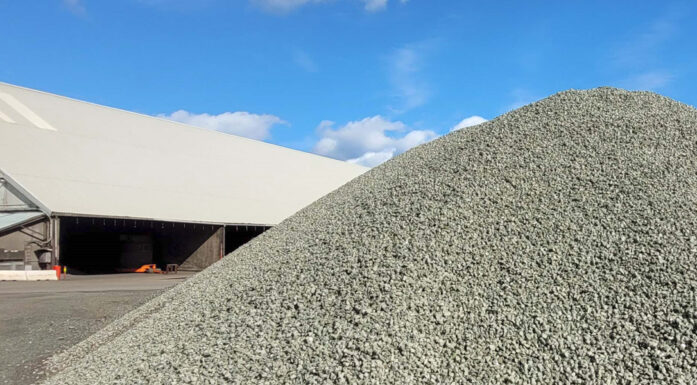Action from the building sector is more important than ever as the world races headlong towards 2.5 degrees
If only the Norwegian building and construction industry would embrace a little more digitalisation, this alone would enable Norway to achieve its 2023 emissions target agreed with the EU.
The recent and alarming UNEP emissions gap report states that rapid and effective measures in all industrial sectors are essential if we are to prevent a climate catastrophe. The report brings into sharp focus a recent statement from the Norwegian government highlighting the fact that if Norway continues with its current policies it will not be able to keep within the emissions budget target for 2023 set out in its climate mitigation agreement with the EU.
Meanwhile, government sources insist that work on this issue is in progress. So, here we offer a little advice. An emissions reduction equivalent to the gap in Norway’s agreed emissions budget can only be achieved if actors in the Norwegian building, construction and property development (BCP) sector became just a little better at practising effective digital interaction.
200,000 tonnes too much
According to the national budget for 2023, Norway’s emissions will be at least 200,000 tonnes of CO2 equivalents higher than the target agreed with the EU.
This is equivalent to the CO2 emissions produced by 125,000 diesel-driven cars.
Or, according to other estimates, the same volumes of CO2 emissions that could be reduced by sawmills, building component factories and other suppliers to the building and construction industry if only they provided corresponding product data to the next stage in the value chain.
Interaction issues
Tools and standards for making such information digitally accessible are not hard to find. They can be used for the publication of everything from a product’s physical properties to calculations of its carbon or climate footprint. They exist so that all the actors in a value chain can easily order the correct products.
However, it has proved difficult in practice to get actors operating in the Norwegian BCP sector, including the small ones, to use these tools and standards. This has led to major interaction issues, causing energy consumption in the sector to be much higher than is necessary.
If only the entire sector embraced greater digital interaction, energy consumption would be reduced by an amount that would enable Norway to reduce its emissions by 1.75 million tonnes of CO2 equivalents, which is 7.5 percent of the country’s total emissions. These figures come from estimates published in guidance on digitalisation (Digitalt Veikart) issued by the Federation of Norwegian Construction Industries (BNL).
So, if only the BCP sector could acquire just a little more competence in this field, such actions alone would be sufficient to wipe out the 200,000 tonne gap in Norway’s emissions budget.
An uncomfortable truth
The uncomfortable truth behind all this is set out in the recent UN report published on 26 October this year . It shows that we are set to experience global warming of about 2.5 degrees in 2100, even if all countries meet the emissions reduction targets they have promised. It also states that, even on the basis of current promises, emissions will still increase by 10.6 percent by 2030 compared with 2010.
If you’re wondering what interaction issues in the Norwegian BCP sector have to do with all this, the answer is essentially four-fold:
- Inadequate digital interaction wastes time and results in high levels of rectification work on building sites. According to the guidance published by the BNL, process fragmentation and poor communication account for between 25 and 30 percent of construction costs.
- Other consequences include unnecessary scrapping and increased waste management costs. The BCP sector generates two million tonnes of waste each year. According to calculations made by SINTEF based on publicly available statistics, digitalisation of the sector is the single action that would have the greatest impact on waste reduction – potentially as much as 130,000 tonnes of CO2equivalents.
- Maintenance costs are also increasing because corrective measures are not appropriately planned and integrated.
- The result of all this is that machines and vehicles work more than they have to and thus consume more energy than necessary.
Motivation problems
According to the BNL guidelines, effective digital interaction has the potential to reduce both construction costs and building project implementation times by as much as 25 percent.
However, in spite of investment in methods and tools to promote such interaction coordination here in Norway, it appears that many actors in the sector have started to lose motivation.
Perhaps companies find the potential benefits unclear? Perhaps there is a lot of uncertainty surrounding the financial investment required? Or perhaps the BCP sector is too little aware that new computing tools and standards can now make digital interaction possible?
Carrots and sticks
The BCP sector is Norway’s biggest onshore industrial sector. Actors that actually carry out construction projects comprise as many as 60,000 companies, employing more than a quarter of a million people. The sector is also highly fragmented and operates within a complex value chain. There is large variation in digital maturity, and competitive barriers make digital interaction somewhat difficult.
So how are we going to generate commitment and enthusiasm for interaction as a concept? Here are a few carrots and sticks:
- The authorities have the power to require digital traceability pursuant to the Norwegian Liability Act and Transparency Act, and in this way to implement a ‘forced introduction’ of digital interaction.
- The system known as ‘documentable digital twins for operations, maintenance and the re-use of buildings’ can be made so attractive that major property developers will use their commissioning powers to demand digital traceability, and thus also digital interaction.
- The sector can create a ‘role model’ project that demonstrates to actors in the sector that digital interaction is feasible and that the system offers sustainable wealth generation and export opportunities.
No other way
The hidden threat here is what is known as the EU taxonomy of sustainable activities. Digital interaction and digital traceability will be essential if the BCP sector is to meet future EU demands for documentation and environmental performance. Actors that prepare for these new business conditions will be the ones that survive. There’s simply no other way.
This article was first published in the online edition of the magazine Teknisk Ukeblad (TU.no) on 17 November 2022 and is reproduced here with the permission of TU.





